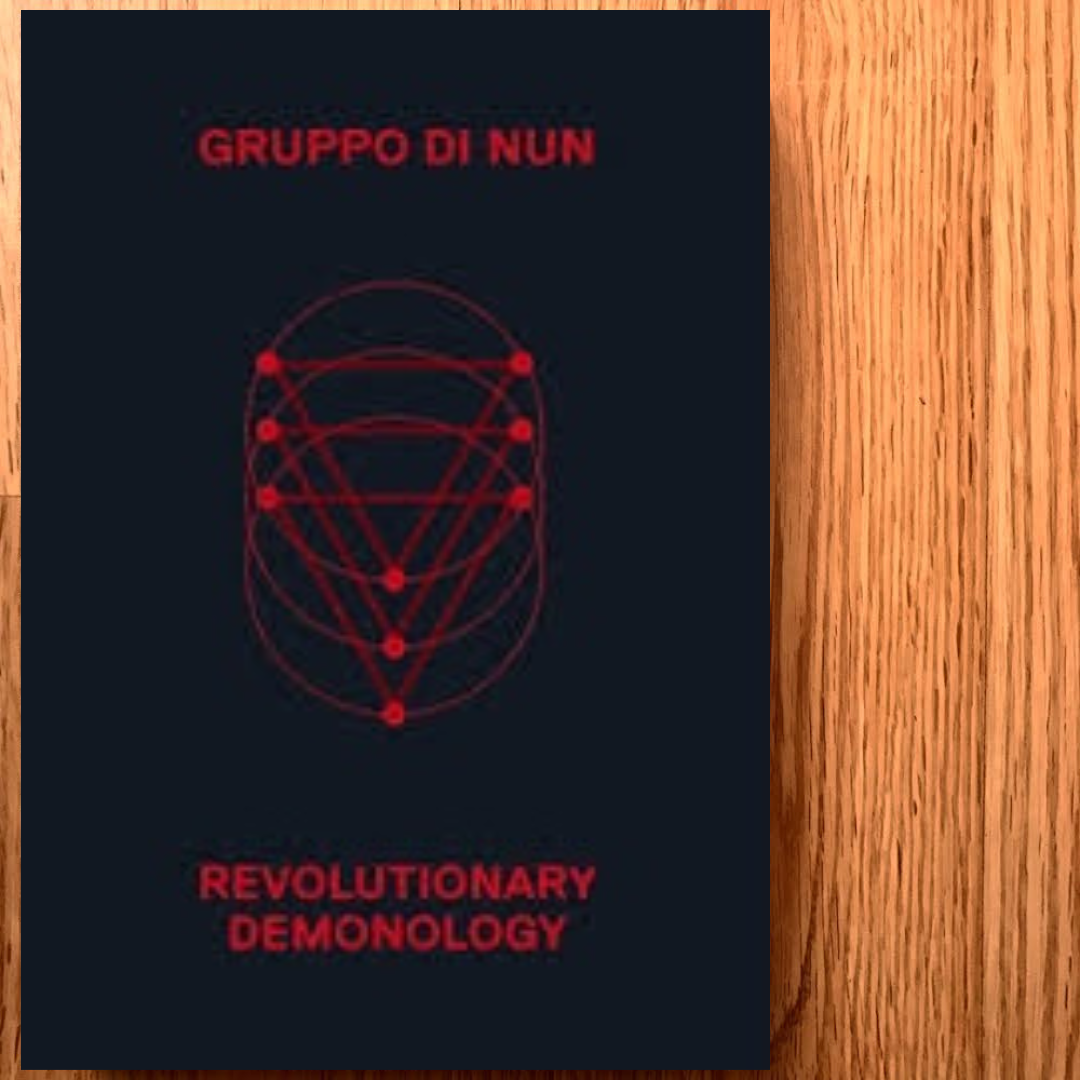By Shan Powell
Content warning: sexual content, graphic descriptions of death and gore
When I saw the listing for Gruppo di Nun’s Revolutionary Demonology, I was intrigued. Gruppo di Nun “is a collective of psycho-activists based in Italy, dedicated to organizing forms of covert resistance to heteropatriarchal dogma.” I can get behind that…or so I thought. I’m not certain what I was expecting, but it isn’t what I got. Maybe I was hoping for something more introductory in scope. Maybe an illustrated text, like some others I’ve reviewed from MIT Press. Instead, I received a brick of a book, drenched with footnotes, and a hefty bibliography.
This book is far more academic than I expected. My understanding of demonology comes from a mixture of pop culture, White Wolf roleplaying game books, Sumerian mythology, and Christian boogeymen (I was raised in a Christian cult which believes in literal demons and devils). This book isn’t really any of these, although it touches upon them (and many more).
I think that to understand each of the sections of Revolutionary Demonology, close reading is necessary. I suspect that only someone with the appropriate backgrounds will be able to read this quickly. This anthology requires concentration, a good dictionary, and the patience to look up a lot of cited works. I wonder how much of this could be attributed to being a work of translation. This book was originally written in Italian, and I do not know Italian. That being said, fun can still be had by reading pages out of sequence and at random.
I enjoyed, but didn’t quite understand, this rather cyberpunk quotation pulled from “Ritual: Every Worm Trampled is a Star:”
The energetic decay of patriarchal temporal structures takes the form of a gradual and unstoppable feminisation of civilisation. Domesticated femininities turned monstrous haunt the nightmares of the declining West, in the form of rebellious androids, synthetic hormones, and painful initiatory scars adorned with glittering silicon implants.
Other parts I do understand, although I don’t hold them as truths. I enjoyed the poetic conceits of “Stilla Maris:”
We all bear upon our bodies traces of all ancient catastrophes that life went through during evolution. Being born is analogous to our far-distant ancestors’ traumatic origins as lifeforms emerging from the sea, and the penetrative sexual act is a ‘true regression to the ocean.’
Ok, I see what the authors are getting at and it’s an interesting concept.
Other sections of the book read like black metal or death metal lyrics. This is excerpted from “My Son, Do Not Abandon Me:”
The shreds of your disembowelled body continue to writhe in despair on the cross of creation, repeatedly pulsating in their dance of death as the eggs of countless parasites hatch, burrowing into the swellings of your belly.
If you follow the Left Hand Path and want to get deep into its philosophy, this book is for you. If you want to flip through randomly and find interesting little snippets out of context, you might enjoy this too. Just don’t expect light reading.
Thank you to MIT Press, a division within Penguin RandomHouse Canada, for a copy of this book in exchange for an honest review.

















